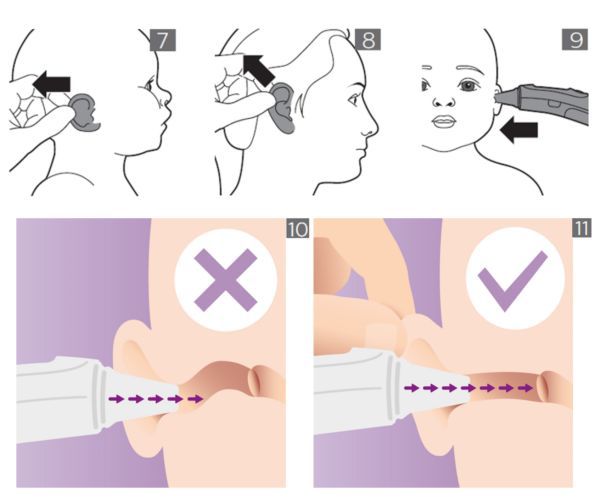With the Philips ear thermometer you can measure body temperature. Find out how to make sure the readings are accurate.
How to get accurate readings from your Philips ear thermometer.
Important to note
Users are advised to use the ear thermometer in line with the instructions for use and to always seek professional medical advice without delay. Philips advises users against relying on the ear thermometer as the sole basis for a decision to seek treatment and/or professional help. Especially when the patient is a newborn (0-3 months), small child (4-36 months) or patient of any age that may not be able to communicate or take care of themselves.
Perfect conditions
Make sure the measurement conditions for the thermometer are correct:
- The thermometer is at the same temperature as the room where you are measuring. If not, allow the thermometer 30 minutes to adapt to room temperature.
- The infrared sensor is clean. If not, clean it and wait 10 minutes.
- The ear canal is free of wax. Ear wax can lead to inaccurate measurements
Wait 30 minutes when:
Also wait at least 30 minutes before taking the temperature:
- If the ear has been covered
- If the person measured has been exposed to very low or very high temperatures
- If the person measured has been swimming or bathing
- If the person measured wears earplugs or hearing aids - remove them first
Try another ear in case:
We advise you not to use the device if you are using ear drops or other ear medication. In this case, measure the temperature in the untreated ear (if possible).
Position the ear thermometer correctly
Hold the outer ear and gently pull it towards the rear of the head to straighten the ear canal.
- Children under the age of 1: hold the outer ear and gently pull it straight back. (Fig. 7)
- Children aged 1 year or older: hold the outer ear and gently pull the ear up and back (Fig.8).
Insert the probe tip very gently and slowly into the ear canal (Fig. 9).
Make sure the probe tip points straight towards the eardrum when you hold it (Fig. 10).
Always insert the probe tip into the same ear, in the same direction and at the same depth.
Note: If you do not point the probe tip towards the eardrum (Fig. 11), the measurement result will be inaccurate.

